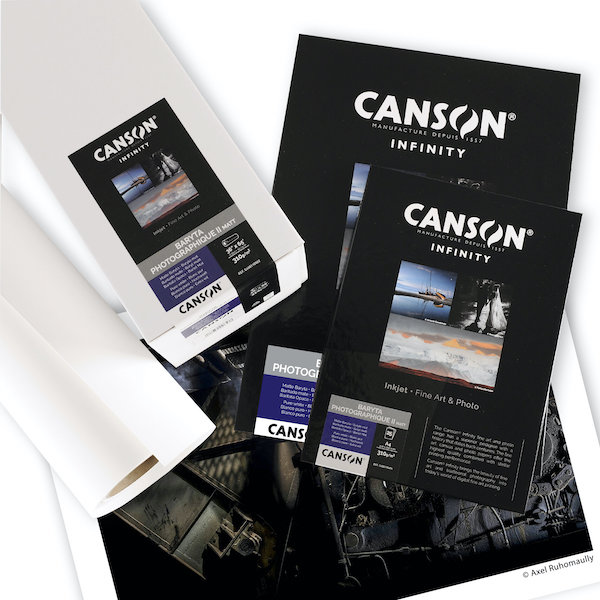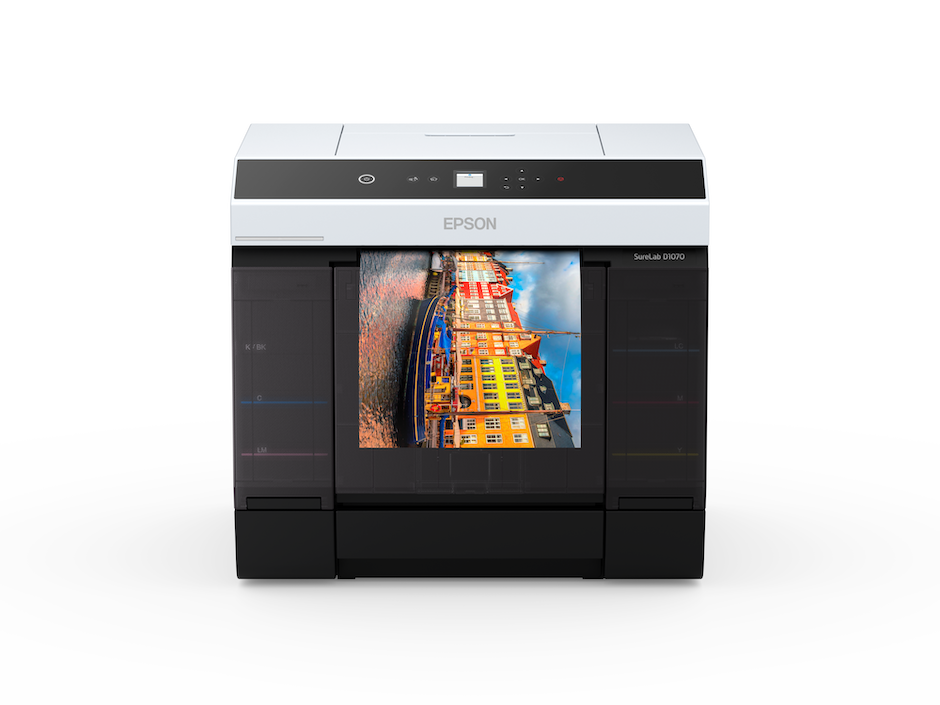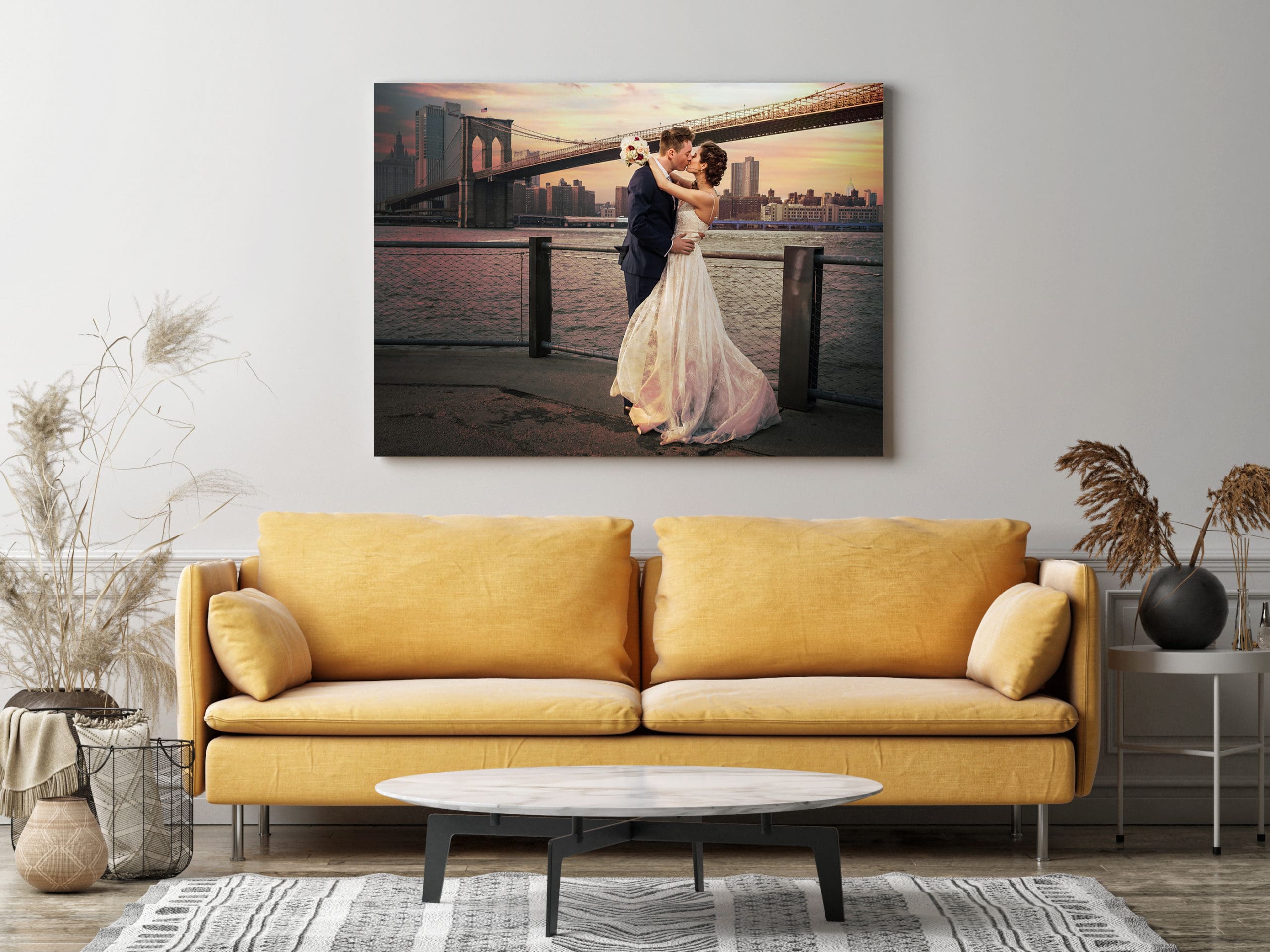Pushing Print
April 28, 2013
As the digital age renders the printed photograph more and more obsolete, how can wedding and portrait photographers continue to instill the value of the printed album into their clients’ mindset? We have good news: Print is not dead. After speaking to pro shooters and master printers in the industry, we found that the fine-art print album is still a hot commodity for many wedding clients. Here, we explore the tactics necessary to market these albums and the trends to be aware of to help keep these products viable.
Developing a Brand
Wedding and portrait photographer Natalie Licini of Je Revele Fine Art Photography Studio and Gallery in Highland Park, New Jersey, says that her fine-art look is what sets her work apart from the competition in the tri-state area. Licini, who made a life-altering career move in 2008—from the finance industry of Wall Street to building a wedding and portrait photography business from scratch—initially defined her style by taking classes from masters in the genre such as Bambi Cantrell and Cliff Mautner, to name a few. She decided then that her path to success would be about developing a style that was more “her own.” She looked for consistency in her work, and after recognizing the themes emerging in her favorite shots, she decided to “boldly differentiate” by rebranding her entire website and studio in a fine-art style, which she explains as using a warmer color palette, less traditional posing and fewer images of her subjects staring directly into the camera. She also focuses on getting to know her clients well beforehand to capture intimate moments that breathe life and personality into her images. “I decided to shoot and sell the things I wanted [to be] out in the world,” she says.
When Licini first made the shift to a fine-art style, her wedding photography business plummeted: “Instead of shooting 20 weddings a year, I dropped down to 10 to 12.” But, she notes, the trade-off was well worth it. She began making more money per shoot, and she was doing what she loved.
In 2011 at WPPI, Licini was introduced to Jonathan Penney, a master printmaker and owner of Jonathan Penney, Inc., a boutique-printing studio based out of New York and North Carolina. She was struck by “his beautiful matted prints [that] are unlike anything I’ve ever seen unless I’m in a gallery in New York or Boston,” she says.
Today Jonathan Penney does most of Licini’s post-production editing, and she offers his fine-art wedding album as part of her package. “Twenty percent of my clients will get the albums,“ she explains. “Not every [client] can afford it because I price it high—it’s an heirloom. It’s something that’s cherished.” She says that she’s become known around the industry “as the girl with the beautiful, handmade albums.”
The fine-art Jonathan Penney “heirloom” album Licini offers her clients is distinguished in that it is hand-bound with Italian leather and includes deckle-edged pages with vellum interleaving, stitched in separate signatures. The images are printed on Canson fine-art papers (most are 310 gram) and are hand-deckled and finished with a protective glaze, then mounted directly to the album page.
Aside from her canvas and wood “heirloom” presentation box offerings, she also offers a Jonathan Penney couture portrait presentation box which is covered with an archival Japanese print cloth and ties with a satin ribbon. The box is fitted with a fine-art, hand-glazed print on the cover and holds loose, matted deckle-edged prints. All of the Penney paper prints are rated to last between 100 and 200 years.
Licini continues: “I am going after that really specific client that appreciates art and the fine things in life. I charge a premium for the work that I do and that Jonathan does [as a master printer].” Licini especially loves to showcase her fine-art albums at bridal trade shows. “It’s an experience opening and unraveling the album. It’s like nothing you’ve ever seen in the industry,” she says of the quality of the album. “It’s created a lot of buzz-marketing for me,” she says.
Finding a Product That Clients Want
Jonathan Penney and Gregory Georges, the dynamic team behind Jonathan Penney studios, came together in 2009 to marry their knowledge in Penney’s studio (which Penney had been running since 1991). Penney is a master printmaker (see RF’s story on the print in the February 2011 issue) whose background is in darkroom printing and who has worked with many professional photographers; Georges was with Adobe for years as a beta-tester and has written ten technical photography books.
The team works closely with photography studios like Licini’s to create a fine-art line in a four-part process: the shoot; the “Creative Edit,” which helps to transform the images based on the photographer’s taste into a “fine-art look and feel”; the printing on fine-art paper; and the final presentation.
They explain that it’s less about the technology these days and more about the presentation, since the playing field has been leveled so much with improved consumer accessibility to high-end printers, cameras and computer software. Though anyone can purchase these products, not everyone can convey the “magic” that happens in the editing and printing process, which occurs when handled by an expert in the field. “Another thing we are up against is this devaluation of the photographic image,” Penney explains. “Everybody is a photographer, but not everybody is a printmaker. And fewer people are having prints made. We’re pushing the art.”
A master printmaker, says Penney, will “understand what it means to execute a photographer’s vision and commit it to paper in such a way that it reflects the artistic intent.”
Currently Penny and Georges print fully digitally on fine-art papers, though they also have the technology and expertise to make prints that look like they are straight out of the darkroom. They still see some shooters bringing in scanned negatives, but those who are shooting with film, Penney explains, are those who market themselves specifically as film shooters.
Penney says, “Greg and I have always been ones to go opposite, not just being on the cutting edge, but actually trying to push the pendulum back toward appreciation for the print. The basic message is, ultimately you want to have art somewhere in your home. Ultimately you need a print because [digital media] is not going to last.”
They note that while technology changes, a print will always remain. The experience of the art is “tactile and sensual,” Penney says. “You’ll never get that when you’re looking at a computer screen. There is a qualitative difference and it goes very deep.”
Understanding Trends in the Market
Angela Marcaccio, the marketing director for Richard Photo Lab in Los Angeles, which functions as a traditional wet darkroom and digital printer, says, “It’s not just proof prints [clients are asking for],” explaining, “it’s canvases and mounting that bridal parties and parents are ordering. I think it’s the part of the photographer to educate their client and show them how beautiful these [prints] can be.” But there are new trends in the market. “Some of the big things we see here are different options in borders. There are optically-centered photos so there is more of a border on the bottom—they look like Polaroids,” she says. She also notes that there is still a really passionate group of wedding photographers who shoot with film.
Georges’ perspective on the industry is also centered on fine-art offerings. “In recent years, vendors were driven to meet the needs of lower-cost albums and therefore there has been a significant move toward press-printed products. Also, many studios that once used matted albums moved toward flush-mount albums so they can add page designs and have edge-to-edge printing. Our new albums are all about the photographic art.”
In other words, the print album is here to stay, so long as the offerings are innovative to the album industry and studios keep pushing unique designs and materials that rival traditional albums.
Boosting sales
In Licini’s studio, the bridal clientele who usually purchase albums tend to be between the ages of 30 and 50—quite a large pool to market to. For the younger bride in her 20s, she explains, it’s usually the parents who purchase the albums. Her advice for selling: “I use certain keywords that aren’t too committal to clients, and I try to keep it casual. You have to be comfortable and confident in your work. It’s best to show [the client] five to ten [popular] options, then guide them [through the process].” She says the key to her sales is that she meets every potential client in person.
Another selling point is the longevity of the printed album. “Even though it’s the digital age, I truly believe in print and having printed work passed down through the generations. I can’t tell you how many of my clients or friends have lost years of photos because drives failed or they didn’t back things up and they’ve lost wedding photos and newborn child photos because the digital age took over and people made the mistake of not printing. That’s devastating,” Licini says.
Cliff Mautner, who was a photojournalist for 15 years before expanding into wedding and portrait photography, says, “It is a smart business decision to offer the right client a product that is above-and-beyond so they can give that client something to reach for later on. While I still believe a traditional bound book is going to be the bread-and-butter of the wedding industry, I think that for an upper-crust client, showing them something that’s a premium product for a premium price is just smart. Anything you can use for separation in this industry is a good thing.”
His success in selling albums comes from building the product into his sales. “I don’t offer a collection without an album,” he says, “and I don’t offer shoot-and-burns.” And the trends haven’t changed all that much. “To this day my clients are still purchasing (mostly) matted albums, though I believe in this industry most are choosing flush [mounted albums]. I offer a hybrid album that’s a combination of matted and flush.”
Even in the face of some couples opting to print their own digital albums, there is still a viable niche market for the hand-printed fine-art album: The demand is so high that Jonathan Penney recently teamed with the 450-year-old Canson paper company (for its fine-art prints), Leather Craftsmen (for binding) and world-renowned photo editors (for the “Creative Edit”) to produce a new line Jonathan Penney Collection albums. “We’ve looked to find the best of everything it takes [in the industry] to make the highest quality album,” notes Georges.
Penney adds, “We’re kind of evangelists, if you will [for the printmaking philosophy and mindset].” One thing is certain: Print is alive and well.




